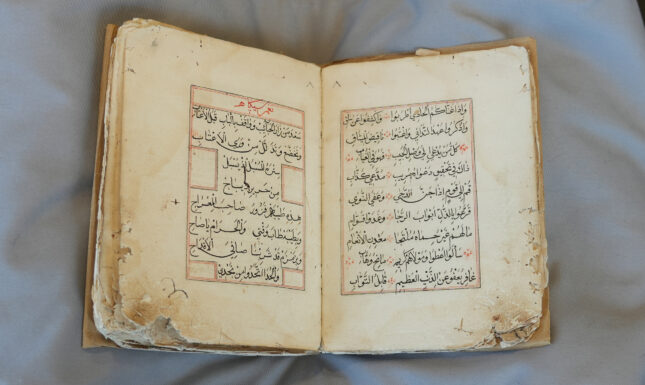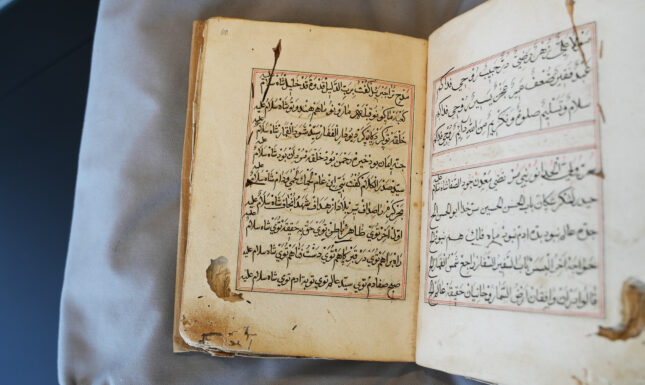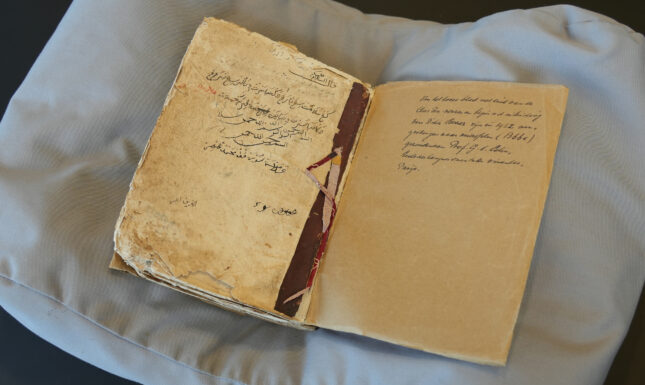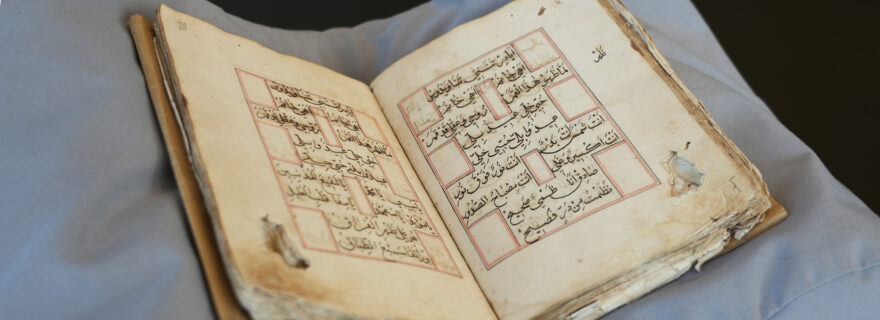The Iranian Diaspora in Southeast Asia: Old Manuscript, New Perspectives
Majid Daneshgar discusses a rare Persian-Malay manuscript: Or. 5658. It provides a clearer picture of the history of Persian proficient people and Persian-Shīʿīsm in Indonesia.
An official letter from the Iranian National Archives (n. 1/1044), Tehran, has come to my attention concerning the existence of the Iranian diaspora in Southeast Asia, including Indonesia (“Javah”) and Burma. This document was written in 24.9.1947 (14.7.1326) by Mr. Bahman Moʾbed (also known as Moʾabbed) an Iranian merchant[1] owning different trading houses, shops and companies in Tehran (Iran) and Bombay (India). The letter was sent to the Iranian Prime Minister, Ahmad Qavām (d. 1955).
The letter is translated as follows:
Moʾbed’s request was finally turned down by the Ministry of National Economy on 24.10.1947 (19.08.1326) as he was considered an unqualified agent to open a trading house in Burma and Javah. Nonetheless, the questions troubling my mind are about the presence of Persian-speaking communities, mainly from Iran, who were Shīʿī believers, in Java, and more importantly, what kind of cultural environment was provided for their activities?
Although we have been collecting more information about the Iranian diaspora in Burma, we know almost nothing about their population and activities in Indonesia over the last few centuries. But old materials including manuscripts from Java may give some clues to the answers.
During my research at the Scaliger Institute of the Leiden University Library, I went through many manuscripts from central Indonesia, including the Bantenese collection of Java. They were brought to Leiden University Library by the Dutch orientalist, Christiaan Snouck Hurgronje (d. 1936), who sent them to the library “in 1906 just before he moved from Batavia to Leiden”. Interestingly, several manuscripts in this collection (and from other Javanese collections) about mystical, theological, philosophical, literal and legal concepts, include Persian sentences and/or demonstrate direct or indirect connections with the Persianate World. However, one of them is more expansive about the Persianized context of Indonesia in the past.
The manuscript, Or. 5658, could have been produced either in the late seventeenth or early eighteenth century. It includes the most obvious indications about practising and dissemination of Persian and Persianate culture in Java, suggesting that its owners as well as its audience would have been quite familiar with the Persian language and Shīʿī traditions. The manuscript was in the possession of Bantanese Royal circles, and then Bantanese families, some of whom carried the title of Tubagus. This text was used during the Maulid ceremony, dedicated to the birth of the Prophet Muḥammad. The form and content of the work resemble “a Book of Samāʿ (lit. audition”), a mystical and supplication source accessible to both the general public and religious elites. Such books used to be memorized or recited by small or large groups of devotees for several years.
Or. 5658’s main body is comprised of mystical poems in Arabic and Persian. Nonetheless, the Arabic ones are categorized under specific musical and melodic modes, most of which are Persian. The musical modes include Rāst, Segāh, Chahār-gāh, Panj-gāh. The orthography of the musical modes is clearly local, making Persian letters and terms Malayized (e.g., سه گاه to سیڮاه)


Using Persian musical modes is a unique feature of this Indonesian manuscript, which was later applied in further treatises of the Maulid ceremony. However, Or. 5658 contains further pure Persian texts, also with Malay orthography. It contains rhythmic Persian mystical phrases dedicated to ʿAlī ibn Abī Ṭālib (the first Imām of the Shīʿa) on fl. 109. All parts of this, about the exalted dignity of ʿAlī in the presence of God, calling him the God’s Guardian on Earth (“Vali-e Khodā”), are obviously taken from Shīʿī doctrines which place ʿAlī above other Caliphs. Throughout this Persian text ʿAlī is called “The Shāh” (viz., mystical Lord) who is the “true Kaʿba towards which Muslims (viz., readers and reciters of the Or. 5658 manuscript) should pray”


This demonstrates the strong Shīʿī inclination of the Indonesian author/scribe, which negates former literature that overlooked the Malay-Indonesians’ high interest in Shīʿīsm in the seventeenth and eighteenth centuries.
The next part of this manuscript is a Persian poem ascribed to a famous Persian-born poet and Sufi of Sindh in Hindustan, Usman Marwandī (d. c. 1274) known as Laal Shahbaz Qalandar. This is, in fact, the most complete version of Laal Shahbaz Qalandar’s poem that has ever been found. It also includes Malayized orthography—changing Persian letter forms to Malay ones. As one of the key figures of the Sufi Qalandarī path, Laal Shahbaz Qalandar was a highly respected figure among Persians and Muslim Indians. This poem is replete with nautical metaphors (e.g., “I arrived at the ocean whose waves look like ogres”) – which makes a lot of sense as to why the inhabitants of Banten (a harbour) and Indonesians, in general, copied it.
Having the three distinctive elements of (a) Persian musical modes; (b) Persian Shīʿī poems addressing the guardianship (imamate) and holiness of ʿAlī; and (c) Persian metaphorical poems copied by local Javanese hands, makes this manuscript a rare source. Later, more similar Persian-Malay manuscripts dedicated to the birth of the Prophet were produced in Java (and other parts of Indonesia) over the centuries.
Or. 5658—and other soon to be discussed Persian-Malay manuscripts— has the potential to provide a clearer picture of the history of Southeast Asia in that the central part of Indonesia including Java—contrary to the former literature which viewed Persian-Malay often through the lens of Sumatra and Malacca—used to be the home of people competent in Persian who actively spread Persian and Persian-Shīʿīsm in both written and oral formats.
My general conjecture is that the ports of Banten in Java could have been a place—like Sumatra or Malacca— that welcomed different cultures and diaspora communities; and this inclusive context may have provided a suitable environment for Iranian visitors (and other Persian speaking arrivals) to live there for a long time, up until the early twentieth century. By the time this manuscript was written, it seems that there was a space for the expression of explicitly Shīʿī sentiments, at least in the late 17th-century Banten.


_______
About the author:
Majid Daneshgar, Center for Southeast Asian Studies, Kyoto University, Japan. Also, a former Munby Fellow at Cambridge University Library and St John’s College as well as Drewes Fellow with the Scaliger Institute at Leiden University Libraries.
Acknowledgement:
I would like to thank Peter G. Riddell and R. Michael Feener for reading the earlier draft of this work. All errors are mine.
Further reading:
- Arash Khazeni, The City and The Wilderness: Indo-Persian Encounters in Southeast Asia (California: California University Press, 2020)
- P. Voorhoeve, Handlist of Arabic manuscripts in the Library of the University of Leiden and other collections in the Netherlands (The Hague: The Leiden University Press 1980)
- Majid Daneshgar, "Persianate Fiqh in Indonesia: Majmuʿih-yi Khani as a Rare Legal Manuscript in a Cosmopolitan Context." International Journal of Islam in Asia 2/2 (2023): 144-169.
- Majid Daneshgar, Gregorius Dwi Kuswanta, Masykur Syafruddin, and R. Michael Feener. "A 15th-Century Persian Inscription from Bireuen, Aceh: An Early ‘Flash’ of Sufism before Fanṣūrī in Southeast Asia." In Malay-Indonesian Islamic Studies: A Festschrift in Honor of Peter G. Riddell, edited by Majid Daneshgar and Ervan Nurtawab (Leiden: Brill, 2022), pp. 86-105.
- Jan Just Witkam, Inventory of the Oriental Manuscripts of the Library of the University of Leiden (Leiden: Ter Lugt Press, 2007), VI: 176.
- Majid Daneshgar, “Persianate Aspects of the Malay-Indonesian World: Some Rare Manuscripts in the Leiden University Library”, Dabir 8 (2021): 51-78
- About the reception of Alid Piety, see Chiara Formichi, and R. Michael Feener, eds. Shiʻism in Southeast Asia: ʻAlid Piety and Sectarian Constructions (Oxford: Oxford University Press, 2015).


